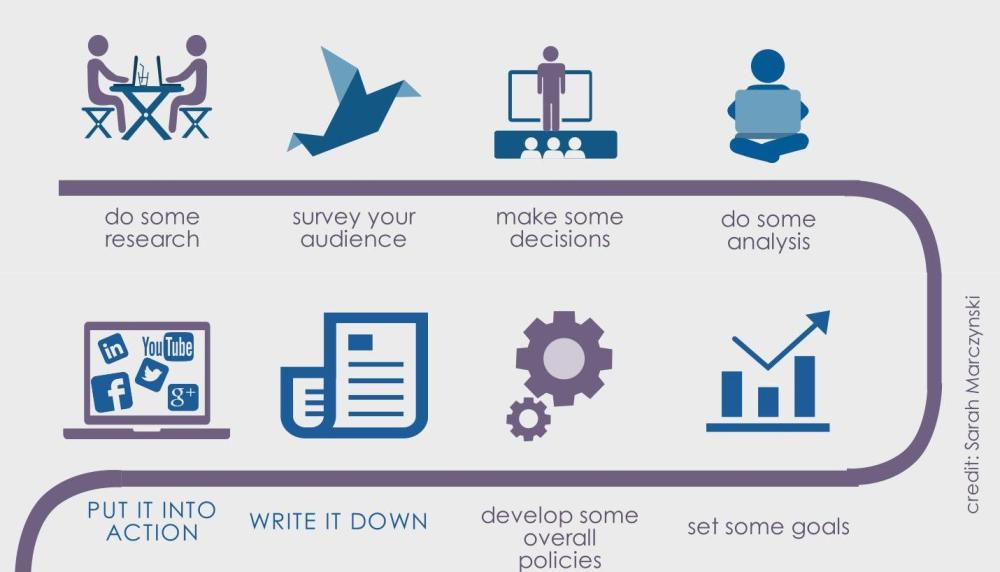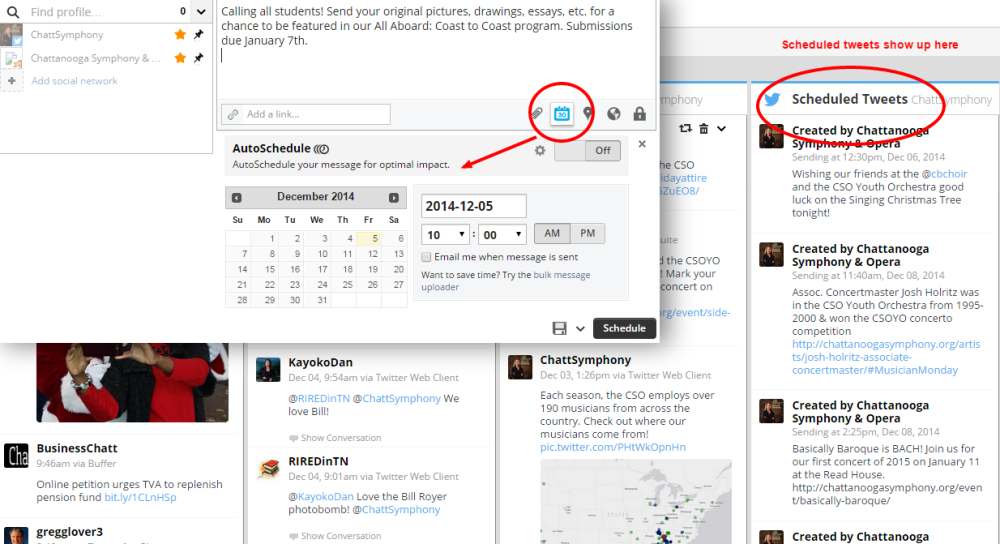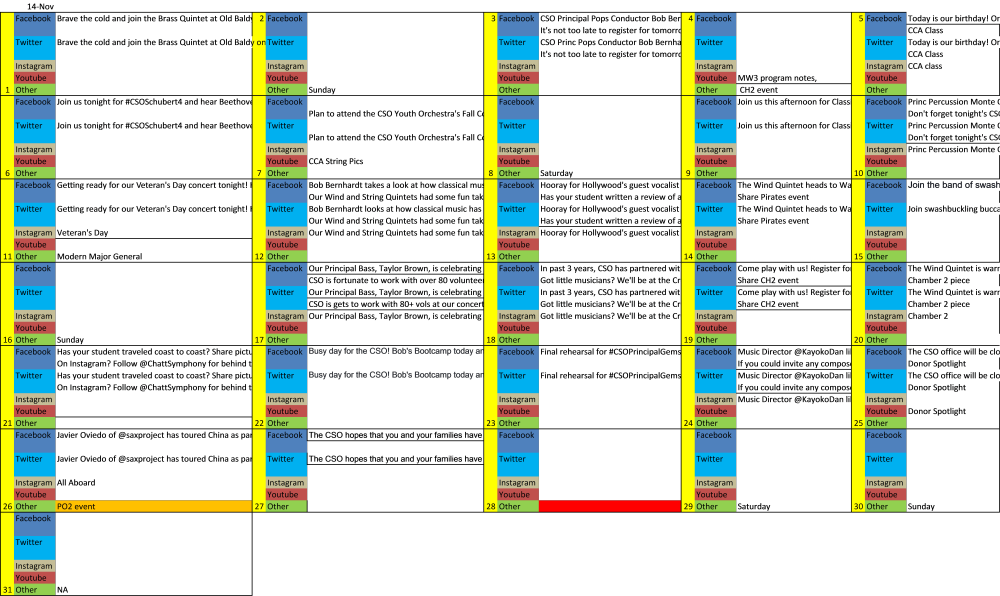
A plan not written down is just a bunch of good intentions.
When creating a social media plan, you’ve likely done research and have statistics, analysis of your own social media sites, best practices, goals for your own profiles and platforms, and different content moderation and posting policies.
If you haven’t written these down or typed them up, then do it! This keeps you accountable and keeps a record for you when you come back at the end of the season to see how you did or when responsibilities change and someone new takes over social media.
Let’s get social!
Social media is all about relationships and interaction. In order to create a following and live online, you need to interact with your audience. Interaction comes through sharing content.
‘Content’ can take on many forms:
- Word only statuses sharing historical info, concert info, artist info, etc.
- Pictures
- Infographics
- Videos
- Music Clips
- Web Links
- Your organization’s comments to other users
Really, almost anything that can be uploaded, can be shared and can become content. If you’re doing social media right, you’re frequently* posting content.
*frequently meaning as often as you have determined you can. Thousands of articles have been written about how often you should be posting to your sites. You do you though.
How to keep track of all this posted content? Enter in a glorious spreadsheet calendar. This is my data geek in its full glory.
Notice how there are slots for each day and slots for each platform (the CSO operates on 4 platforms) as well as an ‘other’ slot. And it’s easily modifiable. Quitting Instagram? Take out that line! Want to post 5 times to Twitter? Add more lines!
At the end of the month, sit down with your season calendar; your city events calendar; marketing, development, and community engagement schedules and map out what content is going where, when, and how. Sometimes it’s a simple note like “POPS2” that reminds you to create the POPS2 event on that day. Maybe it’s a full status in the cell: “The CSO is celebrating it’s 82nd birthday today! Happy Birthday to us! #wheresthecake”
Mapping it out like this lets you see any content holes and keeps 30 days’ worth of media organized. It also lets you see what types of content are going out (photos, video, links, straight text, questions, etc.) so that the type of content for any specific week is varied. It also helps you see any deadlines for content creation.
I’m a big fan of doing this once a month, not weekly although it certainly could be done weekly. By doing it a month at a time, there’s enough flexibility to add things in as they come up, but enough of a strategy to cover events, topics, artists that may be important to us and our patrons over the next 30 days. Doing it week by week could easily become micro and full of “buy tickets for the concert this week”, “we have a concert this week”, “COME TO OUR CONCERT TOMORROW!”
Once you have it mapped out, schedule it to go out by:
- Setting a reminder every day to post the content to the site.
- Using a site like HootSuite or TweetDeck to auto-post.
- If using Facebook, auto schedule on Facebook.


Pre-scheduling and mapping out doesn’t mean you can forget about social media until the next month. It’s a relationship, so you have to check in and monitor it, being flexible to changing or adding content.
At the end of the month, sit down again with the spreadsheet and add a new workbook, repeating the mapping out process. As the social media calendar gets built, it becomes searchable, so yes, marketing department, there was a tweet about fabulous guest artist last month.
Being on social media is a great way to interact with current and potential audience members, donors, community leaders, millions of people. Doing some planning and plotting helps to make sure you are authentically engaging them, sharing what you do, and how you are a part of the community.

1 thought on “Creating a Social Media Plan: Put It Into Action!”